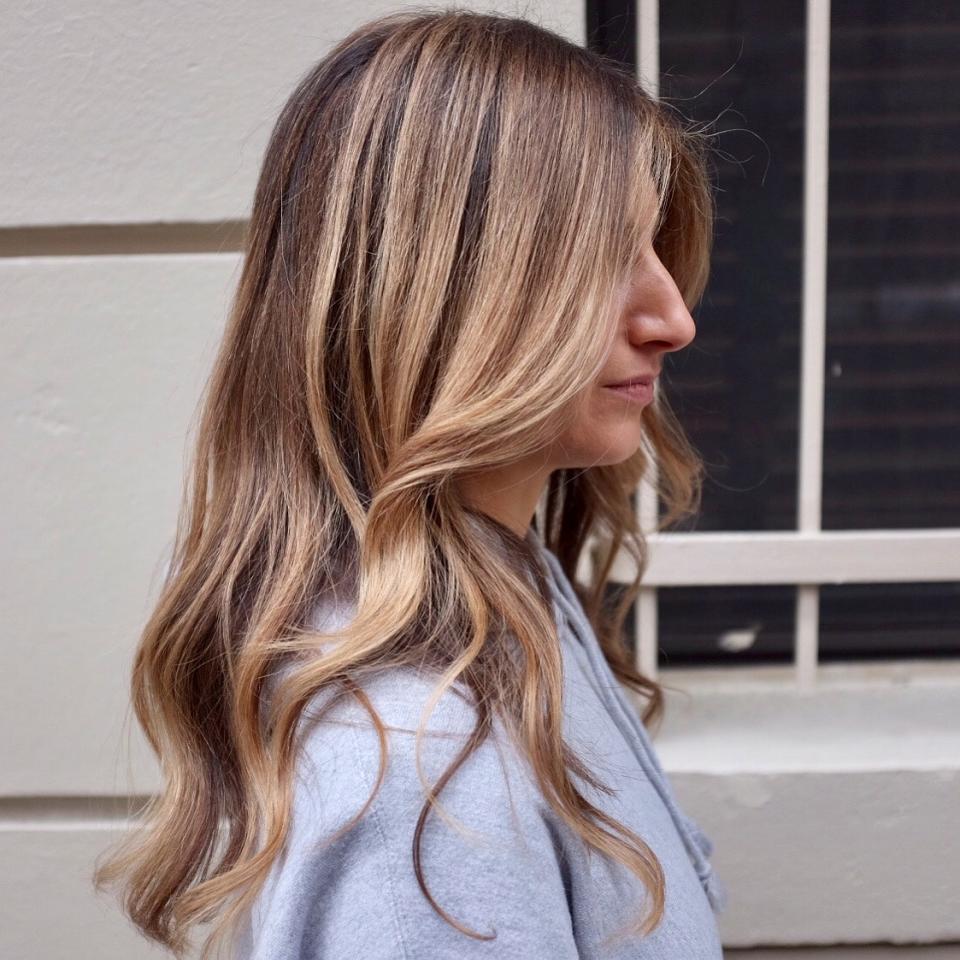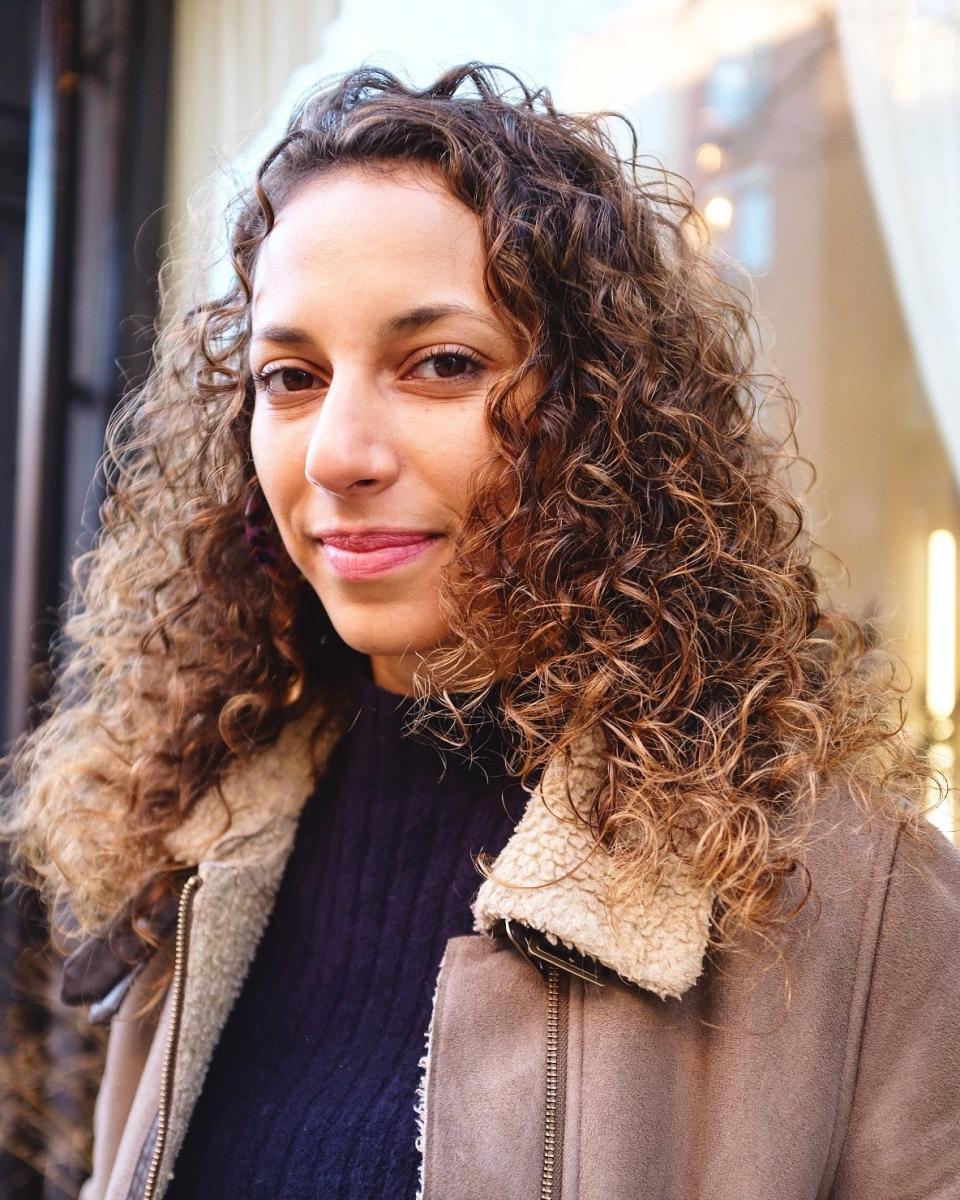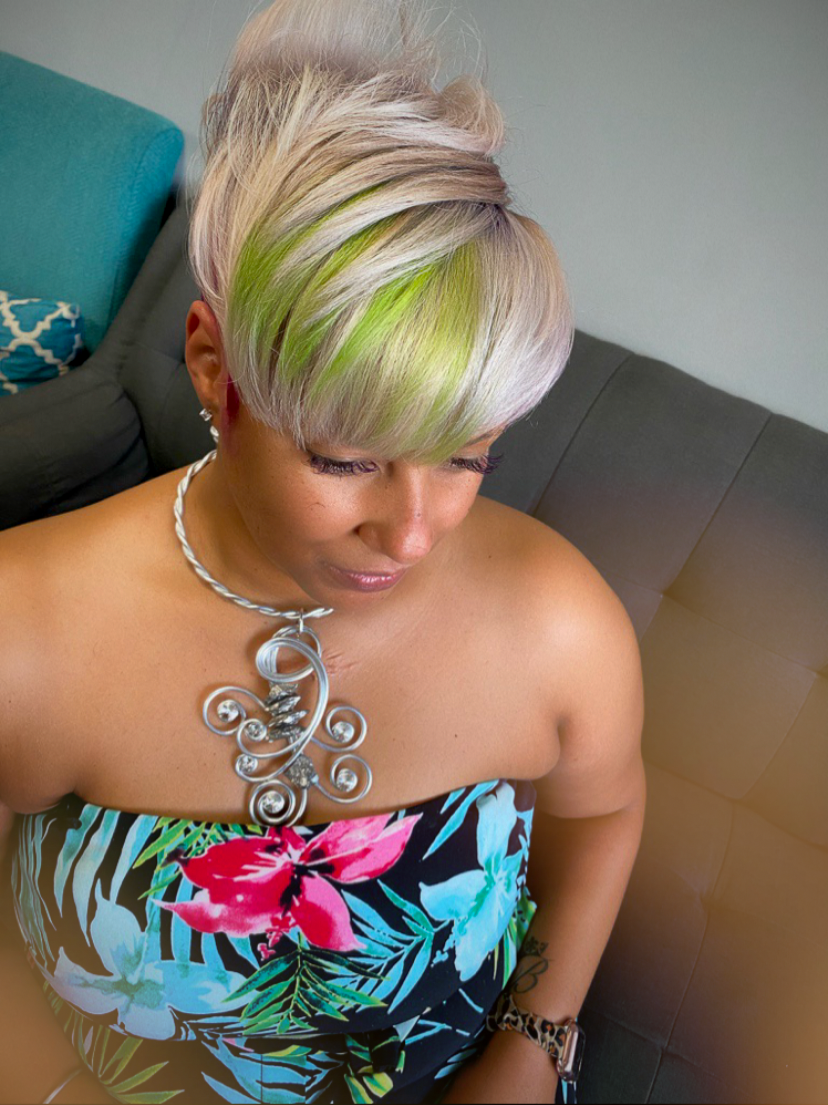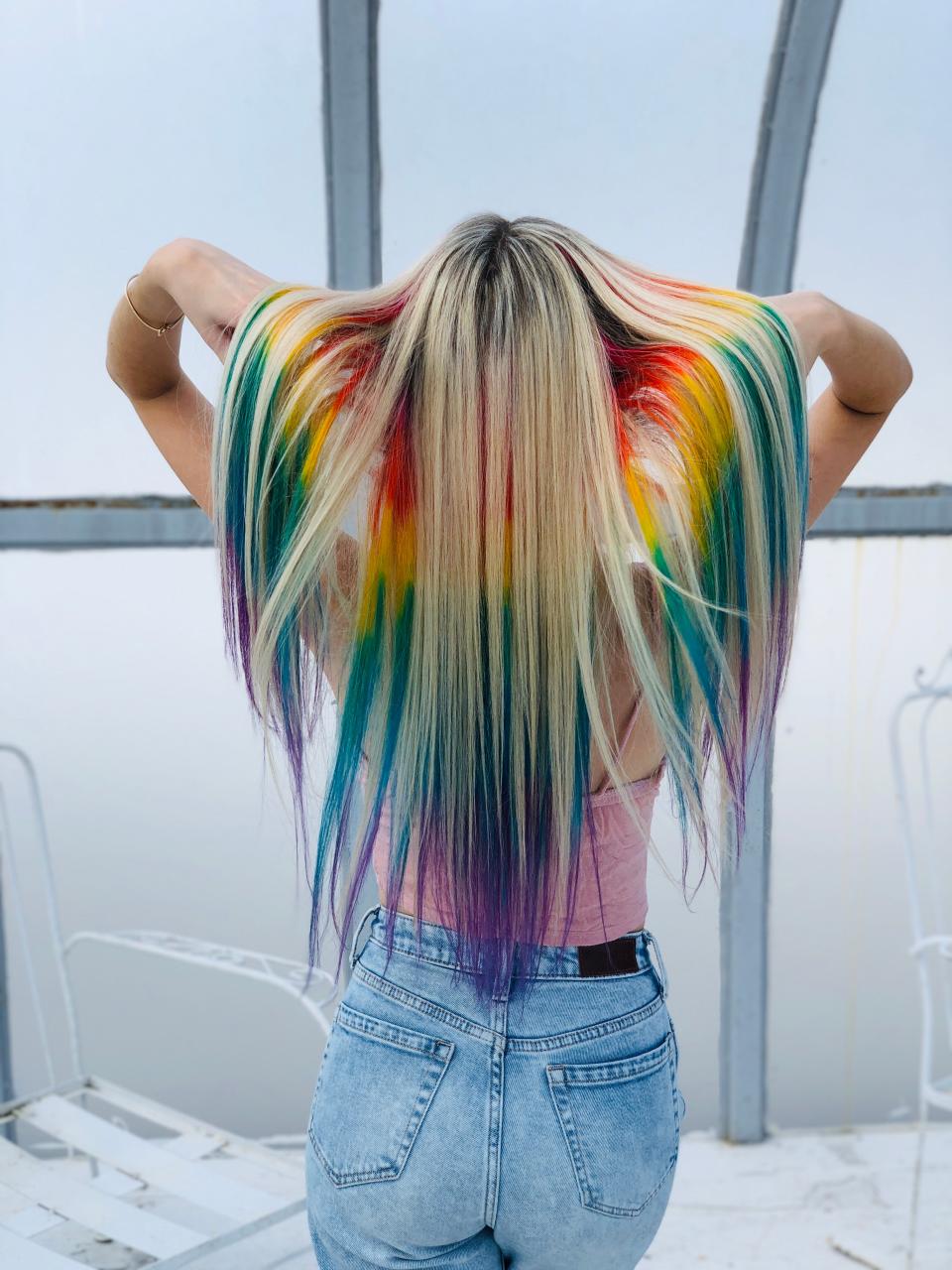How the Pandemic Has Affected Fall Hair Color Trends
For most of us, there's a stark delineation between before and after the COVID-19 pandemic hit. Some visual markers of this shift include the point our phone's camera rolls stop including any people we don't live with, the vast amount of canned goods in our pantries, and, of course, the growth of our roots. Now, as states have reopened and our favorite hair colorists' books have, too, we're faced with a question — what will we look like in the next phase of our camera roll?
Colorist Nikki Ferrara, who is based in New York City, tells Allure that many of the clients she's seen since she reopened her salon in New York City told her they had nearly altogether stopped doing their hair while sheltering in place, and now, getting their hair done finally feels like engaging in self-care again. "People are just trying to put everything back to where it was," she says.
But others are continuing the experimentation they started early in the days of stay-at-home orders. In March and April, many played with hair color in the confines of our homes, not only as a way to pass the time but also to feel in control of this new reality. We saw people experimenting with temporary pink hair dye (fun!) and at-home bleach (eek!). Now that states have reopened, hair colorists and stylists are doing what they can to both primp and protect, and there's already a "new normal" in the industry when it comes to safety standards. We're seeing increased sanitization of equipment and stations, fewer people in salons during appointments, and some offering the option of house calls.
But most salons haven't been open long, so Allure talked to five experts about their predictions for post-stay-at-home hair color trends.
Virtual consultations proved to be useful in many ways
Hair colorists knew early on in the pandemic that their industry would be changed for quite a while — possibly forever. Many started offering virtual consultations and delivering toner and custom-mixed color kits and the option to talk their clients through dyeing their hair at home.
Fort Lauderdale, Florida-based hair colorist Olivia Smalley tells Allure that she's been FaceTiming with both current and new clients. "I've actually realized that FaceTime is so convenient instead of actually making that 30 minutes in my book," she says. She plans to continue the practice indefinitely.
Naomi Knights, a colorist based in Los Angeles, is currently offering virtual consultations regardless of the location of the client. "I was also making care packages for people that I would either drop off or mail [and was] working with different manufacturers and distributors to ship things to clients based on consultations," she says of the early days of stay-at-home orders. Knights even added the extra touch of including rolls of toilet paper in care packages for clients.

Future of Beauty Hair Color
Seeing clients over FaceTime, Zoom, or Instagram chat also helps hair colorists tell how much a client's color has changed since the last salon appointment and assess what may be different about the next one. Ferrara says that some of her clients have booked appointments hoping to get back to their pre-pandemic color in the time it usually takes, but she has to be realistic with them.
"One client of mine is a root touch-up double process, and she has really dark hair, and she's was like, 'How can we get me back to where I was?' This isn't gonna happen all in an hour's time," she says.
Not everyone has been doing virtual consultations, however. Simone Ho-Sang, a colorist also based Fort Lauderdale, Florida, tells Allure that stay-at-home orders have been “devastating” for herself and her clients, as the industry runs on personal, one-to-one contact. For now, she has skipped FaceTimes and Zooms, and has been available to her clients in other ways. She recommends maintenance products for her clients to make sure their hair-care needs would be met until another salon visit would be possible. "My main focus was to make sure they had the maintenance products at home to keep their colors vibrant and hair manageable and soft," Ho-Sang says.
A shift toward more low-maintenance color
There is a slew of reasons the return toward low-maintenance color may be our future, at least temporarily — it costs less, there are fewer appointments necessary for upkeep (which means less time in proximity with others, thus making it a lower-risk option), and during stay-at-home, we've all gotten used to seeing ourselves as we are, anyway.
"People are just trying to put everything back to where it was."
While people always want to feel good, we also want to spend less money, especially as COVID-19 has greatly affected the economy. Thus, hair color experts believe that face-framing highlights, lower-maintenance hair-painting, and treatments that help extend the life of a client's color are going to be key in the coming months.
Face-framing color and color-melting
"Face-framing is the most popular service that I'm doing right now. It's more low-maintenance towards the back of the hair. So is something we call ‘color-melting.’ And it's also a more affordable option," Smalley tells Allure.
According to Ferrara, color-melting is pretty much what it sounds like — color that looks like it "melts" down the strands of the hair. "Although color melting looks like it starts from the middle of the hair stand and goes all the way down to the ends, it actually starts at the root or pretty close to it," she tells Allure. When highlights start at the middle of the hair, the top half can look heavier and get greasy more quickly. If bleach is applied all the way to the roots, it helps to add additional texture to the hair.

Future of Hair Color
Smalley tells Allure that the word "melting" helps people visualize the end-game, which is perfectly harmonized color that's blended from the roots to the ends. “The result is a seamless hue of dark to light that can be very low-maintenance for a client, hence why it’s so popular," she explains.
Balayage and ombré
Though balayage, ombré, and color-melting are all highlighting techniques that allow hair growth without requiring strict maintenance, they're achieved differently. Hair colorists use ombré to layer colors and create a bit more of a gradient, while balayage is done by freehand painting colors on the hair for a slightly more natural look. "There are some people who are like, 'Let's just maintain it,' and for them, I do things like balayage; there's also ombré. Those colors last several weeks," says Tai Morrow, a hair colorist based in New York City.
“Ombré and balayage are placed in a way that your hair can grow out naturally, giving a natural look to your highlighted hair," explains Morrow. She continues, "When you get new growth it doesn’t look old. These highlight applications give a pop of color that you don’t have to be married to."
Highlights that emphasize curls
Additionally, Smalley believes that strategically-placed highlights and lowlights can work to emphasize curl and wave dimension that already exists within the hair. “If [the colorist is] enhancing their [client's] natural curl with highlights and lowlights, it really enhances the way that their curls will look," she explains.

Future of Hair Color
Ferrara tells Allure she usually approaches curly hair with balayage. “This way I can stretch the curl and see which way the hair is going to lay as it falls. I layer on a nice amount of lightener to make sure that the curls pop and look defined once they dry,” she explains. Ferrara also says that if the hair is painted in too subtle a manner, the highlights tend to get swallowed up by the curls rather than creating a defined highlight.
Natural hair colors
We've also been spending a lot of time with ourselves as we are for the past few months, and as uncomfortable as some of that time may have been, many of us have started to get used to our natural hair textures, our faces without makeup, and our natural hair colors. “A lot of people are starting to see their gray hair. They're starting to see their natural color coming. And because they're almost forced to live with that color for a little bit, they have become used to it," explains Smalley.
Others will go bolder with color
On the other hand, some folks are looking to try out new techniques and aren't afraid to push the limits. Many colorists who have been solely doing virtual consultations and mixing up at-home kits for months are only too excited to try out some colorful looks on fearless clients.
Mixing bold colors
Morrow says she loves seeing multiple colors mixed together, especially when braided. She's partial to colors like blues, pinks, and purples, and also tells Allure that many of the clients who are booking appointments with her now are asking for bolder, more colorful looks, rather than opting for a low-maintenance route. "I've seen more of a, 'Let’s just do it now,' attitude," she says.
While Ho-Sang's original priority after stay-at-home orders was getting her clients back to where they were previous to COVID-19, she's totally on board to go wherever their imagination takes them. “I love trying bold colors! I think that my priority after the quarantine was to get my clients back in their routine so that we can try bold vibrant colors for the summer. If they’re up for it, I’m all in," she tells Allure.
Colorful bangs
There's also the option of strategically placing bold colors in parts of the hair that are noticeable but may quickly grow out so you can change hues if you so desire. Colorful bangs, whether done with temporary or permanent dye, is something to look out for. "I've also seen fringe color pops. So, people are doing like their normal hair color and like a heavy fringe where their face frame is, and they're doing like a pop of color there. I've seen a lot of pinks with that. I've also seen some blues and some yellows, which look really cool," Smalley says.

Future of Hair Color
Trying out temporary color
On that note, temporary color is likely going to be pretty popular, as well. Not only is it the very definition of low-maintenance, as it washes out fairly quickly depending on the brand you use, but it also allows consumers to boldly express themselves without fully committing. “A lot of people are wanting to play with temporary colors in general," explains Smalley. She says some of her clients have asked for recommendations of temporary colors, including sprays, inks, conditioners, and herbal colors, including people who want to get rid of grays and those who have the itch to play around with color but don't necessarily want to spend the money and take the full plunge.

How the Pandemic Has Affected Fall Hair Color Trends
Often, hair color can be about something much deeper than aesthetics, though. Ho-Sang believes it's about seizing the moment and acknowledging the chances we didn't take before the pandemic. “I think that clients are going to make a decision on hair color that’s going to make them happy in a post-quarantine world," she says. Some of her clients are taking big swings and going for bright colors. "I think that some have waited to try a bold and vibrant color before we had to close and are taking this opportunity to go back into the world with a new flavor. We have one life — make it colorful."
Prioritizing hair care
While not exactly a color trend, there will be a shift toward valuing hair care and the natural hair texture of each client. Many have stopped or limited heat-styling during the pandemic and started a journey toward accepting — and loving — their natural texture, whatever it may be. The experts we spoke to believe that future hair color trends, as well as salon culture, will only serve to support this shift.
As we realize the importance of self-care, it follows that taking care of our hair becomes part of any routine, as well. "I think hair care is also going to be hopefully more appreciated and more valued after this. I find that a lot of my clients are letting their hair rest. They're doing a lot more treatments and a lot of that self-care is coming back," says Knights.
We're reckoning with the fact that there is no real "getting back to normal" and adapting to a brand-new future, and there are a few drastically different approaches to hair color. On the one hand, some people are looking to see themselves as they always have in the mirror; to be comforted by the fact that they can return to the same, familiar aesthetic they had before COVID-19. On the other hand, some are adopting radically different looks to reflect that our world will never be the same — that we are waking up to something brand-new, every day.
Now, check out these other stories about hair:
5 Trans People of Color Open Up About Their Relationships With Their Hair
These Are the Most Common At-Home Hair Dye Mistakes and How to Fix Them
How to Remove Your Hair Extensions At Home, According to Stylists
Go behind-the-scenes of Billy Porter's Allure cover shoot:
You can follow Allure on Instagram and Twitter, or subscribe to our newsletter to stay up to date on all things beauty.
Originally Appeared on Allure


